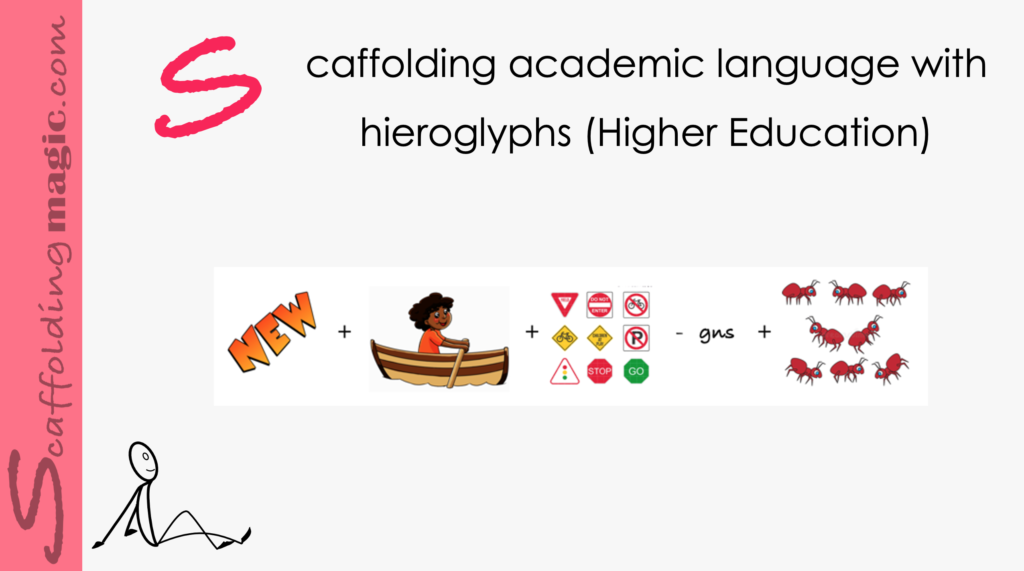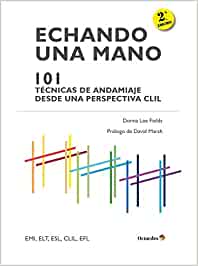You caught a beauty!!!
Download PDF of scaffold here.
theory behind the scaffold…
Educators and owners of academies who claim to teach critical thinking, usually assume that it is a skill similar to riding a bicycle – once you master the dynamic you don’t have to dedicate an inordinate amount of time practicing, just enjoying the benefits. That might be true if we were referring to day-to-day, minute-by-minute thinking, which comes effortlessly and endlessly. The concept of critical thinking, however, is more complex. To arrive at any complexity of thinking, the brain has to put a lot of wheels to into motion.
When giving students opportunities to widen their skills to think critically, we cannot separate the techniques from content (the ‘domain knowledge’). For every subject, issue or challenge, there is a separate and different technique that needs to be used to help the mind expand and consider the issue from all sides. This is crucial for educators to know and appreciate because for our students to be able to be skilled in lateral thinking, they need to learn techniques that are tied to specific content.* So, for our students to be divergent and efficient thinkers, they need to have a warehouse of techniques available to use the appropriate one, depending on the situation.
This scaffold is one of many of these techniques. With it, we stimulate critical thinking through visual clues, with an adaption of the ancient Egyptian hieroglyphics. Using images is a powerful learning tool for all students (studies show that using an image with text doubles learning). Many times, visual learners are often overlooked in favour of linguistic learning, so this activity will excite and engage them more deeply.
To successfully decipher the combination of images and textual puzzles, students need to tap into inferential and deductive reasoning. They examine images and decode how they are linked phonetically. When spoken aloud, students will realise that they are decoding the academic language that will appear in their next unit of study.
As in all scaffolding activities, we encourage you not to get caught in the loop of believing that scaffolding activities steal time from the principal lesson. In fact, they save you time and energy as students will be able to assimilate new information more easily and more fluidly, usually through reciprocal teaching, which is, according to the studies of John Hattie, has one of the highest influences on learning. Further, by taking the time to begin with scaffolds, you’ll have brought a bit of lightness to classwork, and so you’ll see your students work with more energy and enthusiasm.
- *Willingham, Daniel T. (Summer, 2007). ‘Critical Thinking: Why is it so hard to teach?‘. American Educator.
step by step…
Note: Instead of targeting one specific unit, this scaffold encompasses the academic language of a set of units. In other words, the scaffold highlights the vocabulary and terms that appear in various units of – in this case – the study of natural sciences. To deepen learning, it’s an essential to put the words in context, so there are two parts to this scaffold.
Part I
- Choose 10-15 academic terms from an overview of the academic language found in the next few units of your students’ resource.
Example of academic language from a science curriculum that spans a school year:
- neuroscience
- theorum
- endorphin
- circular
- deficit
- hypothesis
- carbohydrates
- control
- ecology
- acupuncture
- syringe
- experimentation
- organism
- observation
- thermodynamics
- To prepare the activity, say each of the terms aloud, slowly, and write out the sounds and syllables you hear yourself saying. (Download this mp4 to give you an idea on how to do this.
- As you hear yourself vocalise the sounds, think of images that match parts of these vocalisations. Connect images with a ‘+’ or +’-‘ sign, and – when need be – any letters that will make the necessary connections. (See example below.)
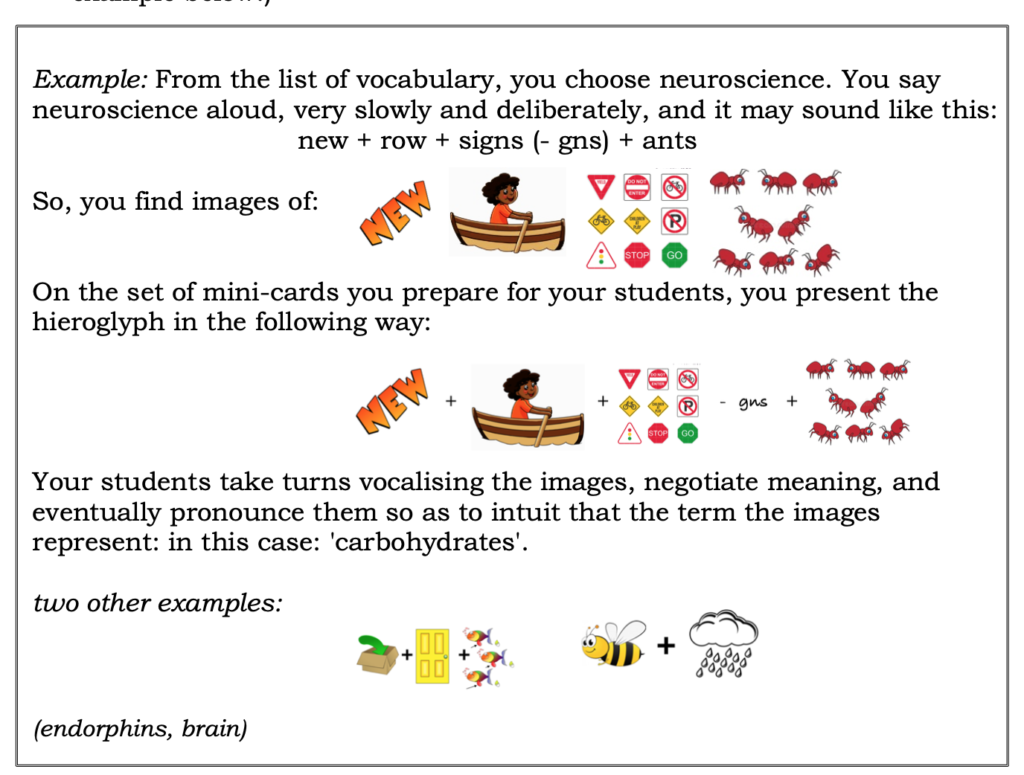
- Once you’ve finished creating hieroglyphics for each of the academic terms, print them on separate small pieces of paper, and make a set for each pair of students. (Download this PPT with examples of hieroglyphs from many different subjects.)
- Give a list of academic terms included in the activity on a separate piece of paper, or make them visible in some part of the classroom. As this may be the first time students interact with these words, they need a list to work from to help them connect the sounds they make from the hieroglyphs to the academic term they’ll see in their reading.
- Students work in pairs (or groups of three) to decipher the hieroglyphs.
- Groups who finish early use the academic language they have just deciphered and write sentences that form ideas they believe will represent the information in the unit they’re about to begin. (Example: My father uses eye drops when his eyes are dry.).
Part II
- On a separate worksheet that you’ll have prepared, students now work in different pairs to choose the appropriate definition of the academic terms that they’ve just deciphered. You’ll give them two clues to match the definitions to the academic terms logically – one option of the definition is literal and the other a bit absurd, a description of the images used in the hieroglyph.
- Those students who finish first, write a sentence to the right of each academic term justifying their choice and repeating the definition. (See examples below.)
example…
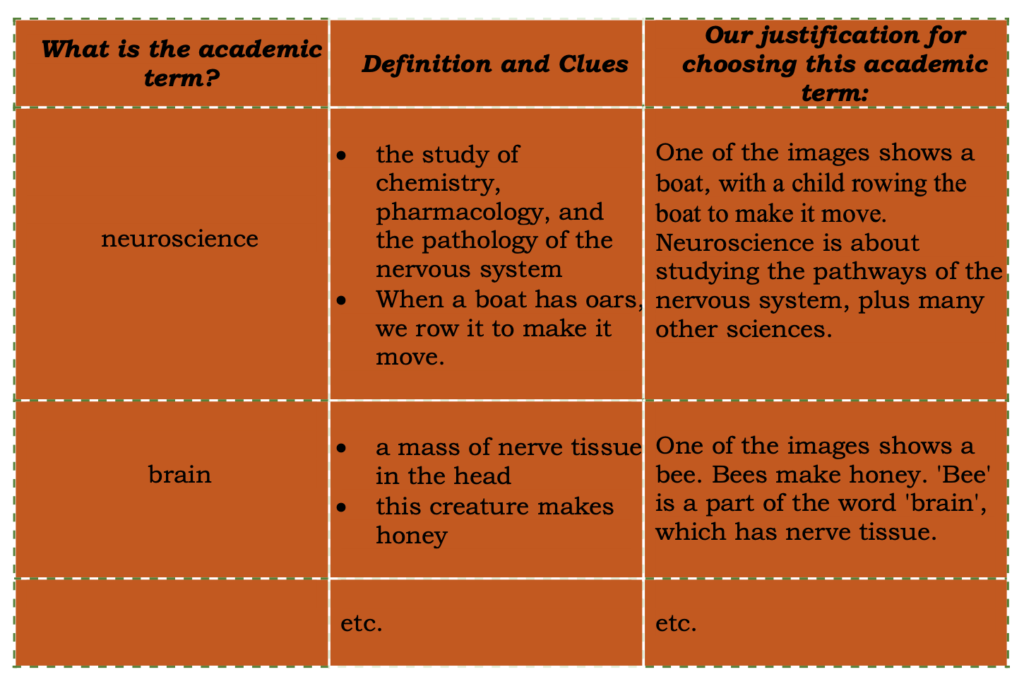
- Reflection: Students write the answers to the following questions from the Question Continuum. (Remember, some questions reflect content and others reflect methodology thus augmenting even further self-efficacy.)

Example:
- Did you work with a partner to decipher the hieroglyphs?
- Which hieroglyphs were the most challenging?
- Who do you know who works in neuroscience?
- When is a theorum and a hypothesis proven?
- Where is the most deficit found in experimentation?
- What is the difference between the use of a syringe and needles used in acupunture?
- How difficult was it to paraphrase the definitions of the academic terms you deciphered?
- Why is it important for your to be familiar with academic language?
- What if you had the choice between studying thermodynamics and ecology? Which would you choose and why?
video explanation of scaffold…
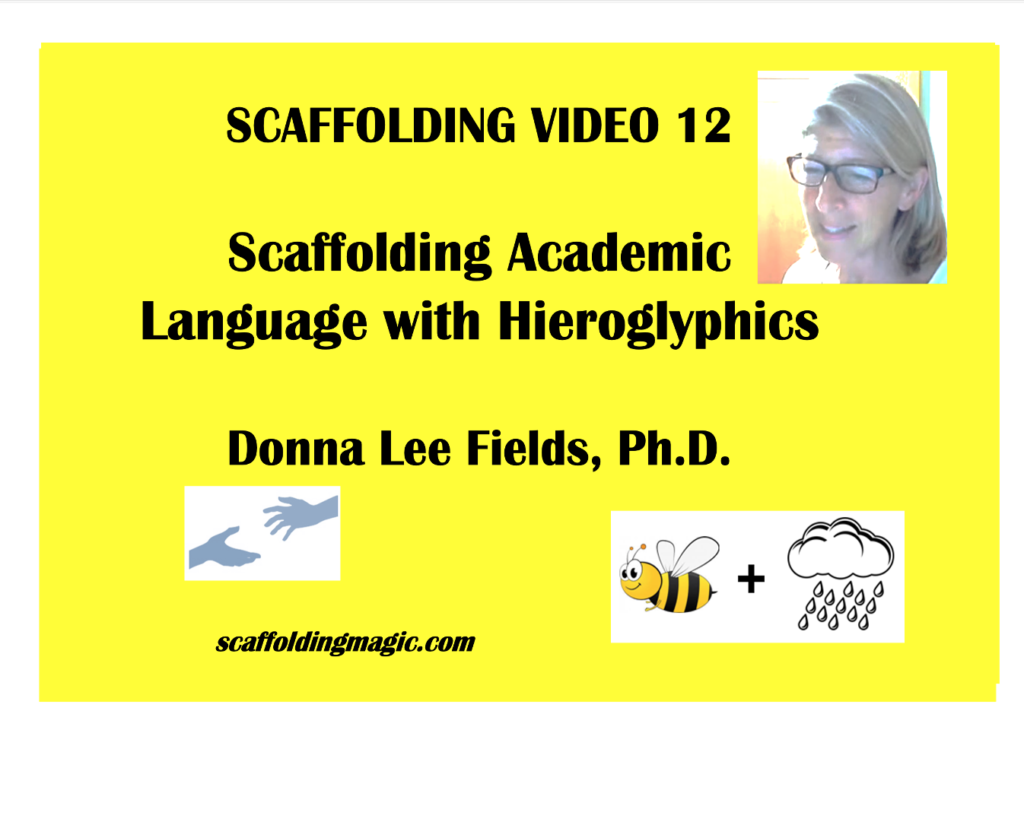
find more scaffolds here…

Scaffoldingmagic.com is your entryway into DYNAMIC bilingual learning methodologies, such as Phenomenon-Based Learning, CLIL, EMI, and ESL. You’ll find ways to implement critical thinking tools (DOK) to promote higher level thinking, the growth mindset, instill an ethic of excellence, deep reflection on learning, and all through multi-cultural, interdisciplinary activities. We have the keys to turning competences into action and to creating collective efficacy in your school so you move ahead as a unified, enthusiastic team.
